Last Chance to Catch NYC's Holiday Notalgia Train
We met the voices of the NYC subway on our nostalgia ride this weekend!

Uncover the original Dutch street names of NYC and see how the names of streets in the Lower Manhattan street grid evolved!

Begijn Gracht. Paerel Straet. Brugh Straet. You may not recognize these Dutch street names of NYC, but these are the names of streets you have likely walked on in Lower Manhattan. Today they are called Beaver Street, Pearl Street, and Bridge Street. When Dutch settlers colonized the southern tip of Manhattan and established the colony of New Amsterdam, they created the island’s first street grid. These Dutch streets were forever cemented in the makeup of New York City when they became a designated New York City landmark in 1983. While the Dutch grid itself has remained largely as it was in the 17th century, when the British took control of New Amsterdam in 1664 and changed the colony’s name to New York – in honor of the royal proprietor the Duke of York, later King James II – the Dutch street names changed as well. Some street names were loosely translated from Dutch to English and some were changed entirely. Here, we trace the evolution of 10 New York City street names from the original Dutch colonial grid and explain how they got the names they have today!
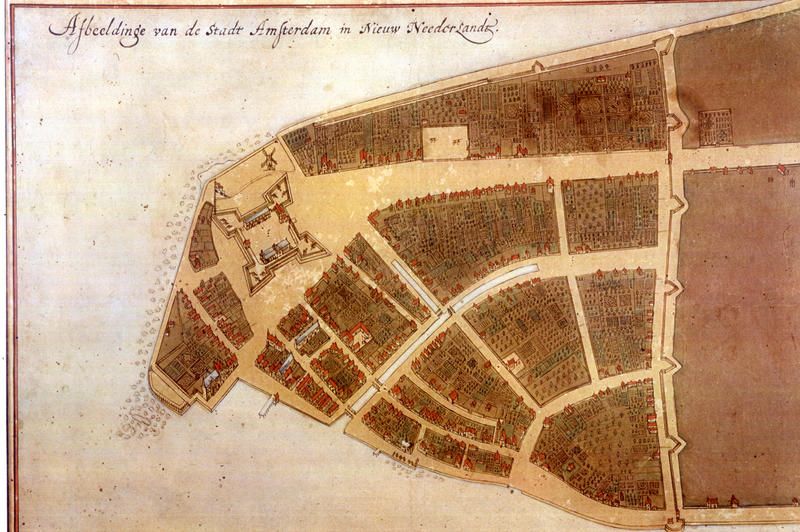
Broadway is the oldest thoroughfare in New York City and one of the oldest in the country. The street was originally an Indian thoroughfare called Wickquasgeck (Wick-kwas-geck), meaning “birch-bark country” and its route ran through the Bronx and Westchester to the north of present-day Albany. Under Dutch colonial rule, Broadway ran from Fort Amsterdam – the site of the Museum of the American Indian today – to Wall Street at the northern border of the colony. The Dutch name for the street was De Heere Straat which translates to “Gentleman’s Way,” but in the common vernacular, it was referred to as “brede weg,” or “broad road” since it was the widest street in New Amsterdam. The eventual English-translated name became Broadway. Under the British, the name of Fort Amsterdam at the southern end of Broadway was also changed. It became Fort James.
You can walk the original Dutch colonial street grid, starting at the former site of Fort Amsterdam, and physically touch remnants of New York’s colonial history on an upcoming Remnants of Dutch New Amsterdam Walking Tour!
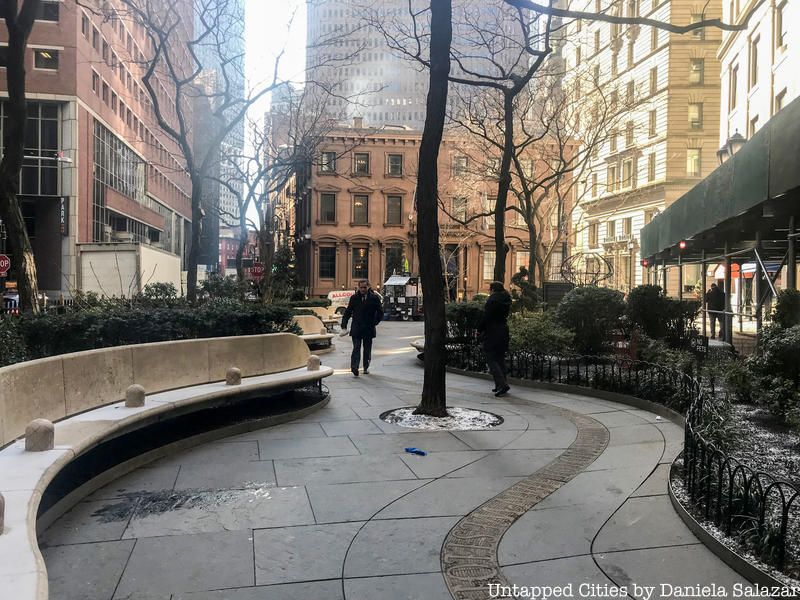
Smee Straet has proved to be one of the most debated Dutch street names in New York. One theory suggests that “smee” means “smithy,” referring to a blacksmith. Another suggests it means oily or slick. On a recent Remnants of Dutch New Amsterdam Tour, a Dutch guest further clarified that “smee” means fat or lard. This might suggest that there was perhaps a dairy on the street from which the street name was derived. In the early 1700s, this street was renamed in honor of the British royal family, the House of Hanover. This was the house of which King George III was a member. (It was a likeness of King George III that was torn down from the nearby Bowling Green and melted into bullets during the Revolutionary War.)
The Hanover name was carried over to Hanover Square which was created in the early 18th century. The square used to be referred to as the slip since it served as a slip on the original shoreline of Manhattan. While there was much turmoil in Lower Manhattan between the British and Americans in the throes of the Revolutionary War, today there is a symbol of the friendship between the two countries. The Queen Elizabeth II Garden in Hanover Square was created in memory of the British victims of 9/11. The park pays tribute to the counties of England with an inscribed stone ribbon that winds through the sidewalk of the park and the sixty-seven British victims are memorialized by sixty-seven bamboo shrubs that line the park.
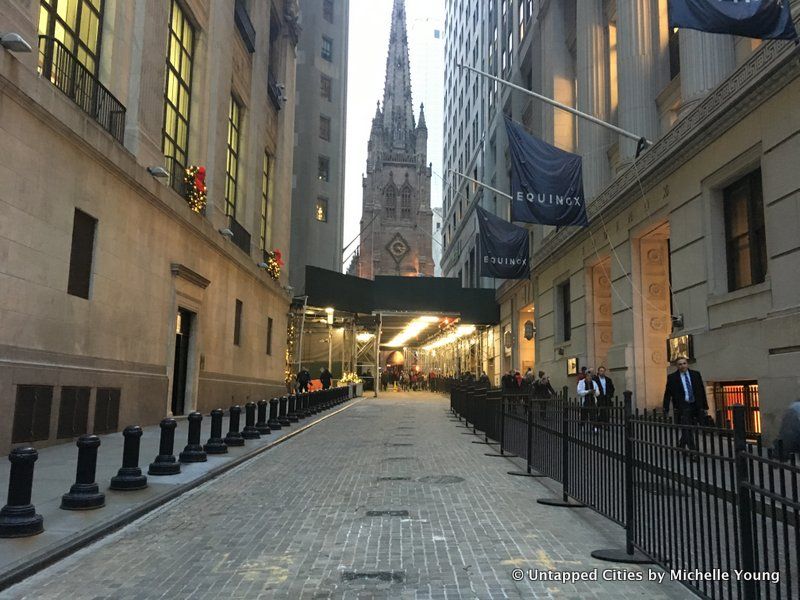
Wall Street marked the northern border of New Amsterdam and the site of an actual wall. The wall stretched from the East River to the Hudson and was put in place to protect the Dutch colony from Native Americans and the British. It is estimated that the wall was built in either 1639 or 1653.
The street that ran alongside the wall was called Het Cingel which translates to the “girdle” or “rampart.” According to the Landmarks Preservation Commission, the British changed the Dutch name to “Wall Street” in 1685. Running down Wall Street today you can see wooden block pavers embedded in the cobblestone streets that indicate the site of the former wall.
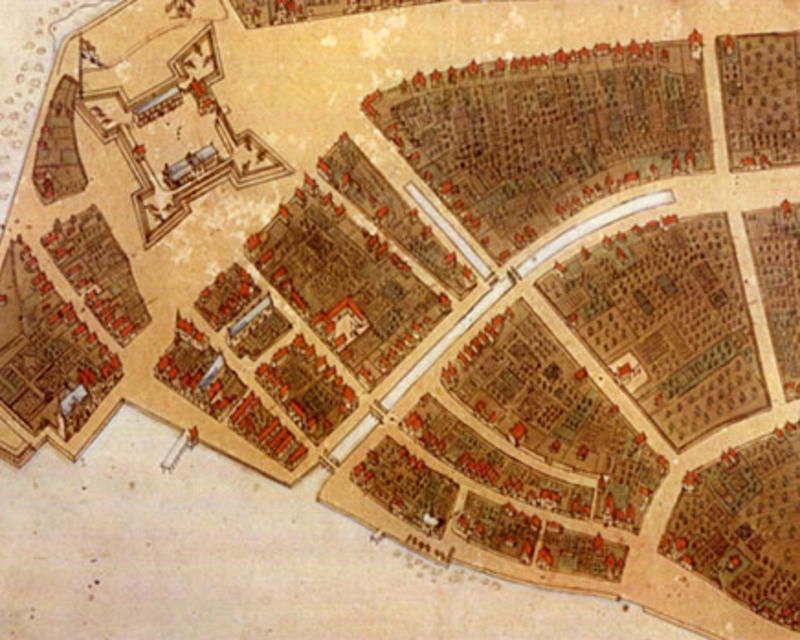
During the time of Dutch Colonial rule, Broad Street wasn’t always a street. In a 19th-century map of 1642 New Amsterdam, this pathway was marked as the “Common Ditch.” For a time, what we now know as Broad Street was Heere Gracht which translates to “The Lords or Gentleman’s Canal.” This canal flowed from Pearl to Beaver Streets and emptied into the East River from 1646 to 1676.
When the English took over, the canal was filled in and the street created on top of it was dubbed Broad Street in 1692. Due to the fact that the street was once a canal, it was wider than usual. Another street that derives its name from the time of the Heere Gracht is Bridge Street. Known in 1658 as “Brugh Straet,” this Dutch street was a bridge over the canal and its current name comes from the translation.
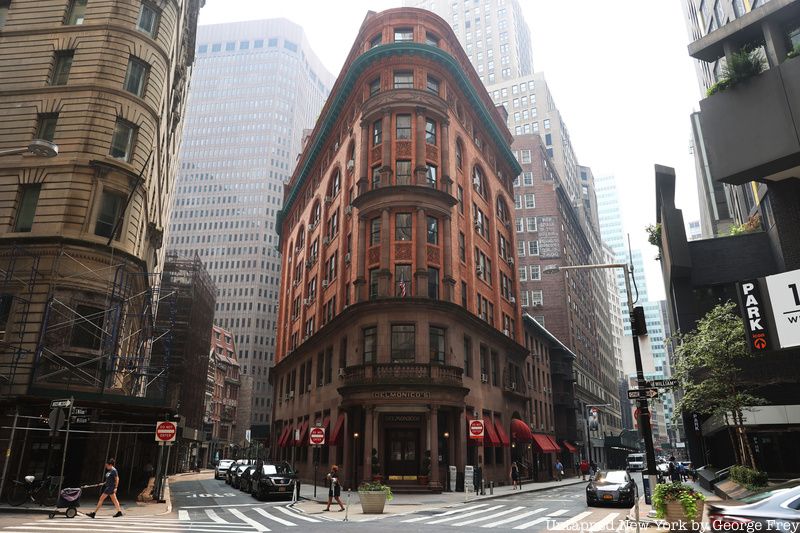
The present Beaver Street encompasses three New York City colonial streets with Dutch street names that were Beaver Gracht, Prince Straet, and Sloat Lane. The original name of the street was Begijn Gracht which loosely translates to “lay nun.” The street contained the Beaver Gracht, or Beaver Canal in 1658 which was later filled in.
Beaver Street was extended to its current length in 1837. Its name, which dates to before 1693, signifies the importance of beavers to the Dutch colony. Beaver pelts were a vital part of the city’s fur trade.
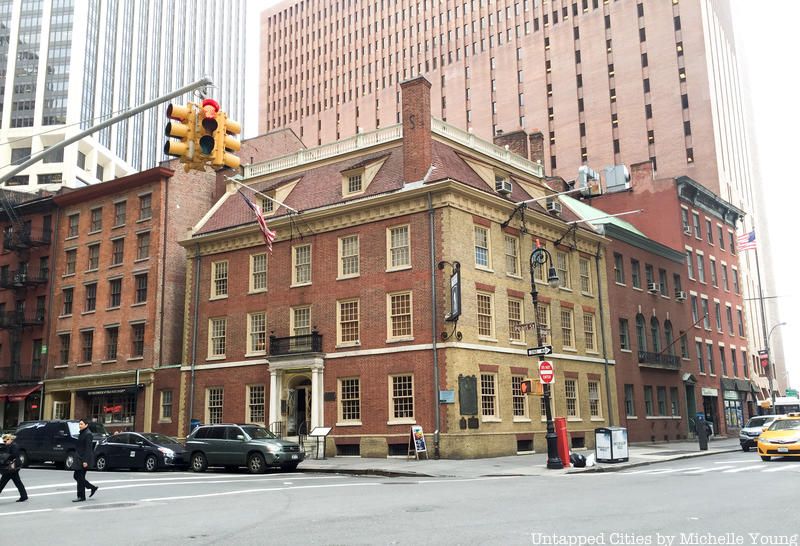
Present-day Pearl Street was New Amsterdam’s East River shoreline. The name is believed to come from the abundant oysters that were found in the East River and the belief that pearls found in American waters would make Dutch colonists rich.
The street dates back to 1639 and got its anglicized name in 1794. Pearl Street, from Whitehall to Wall Street, incorporates two colonial streets, Paerle and Dock or Great Dock.
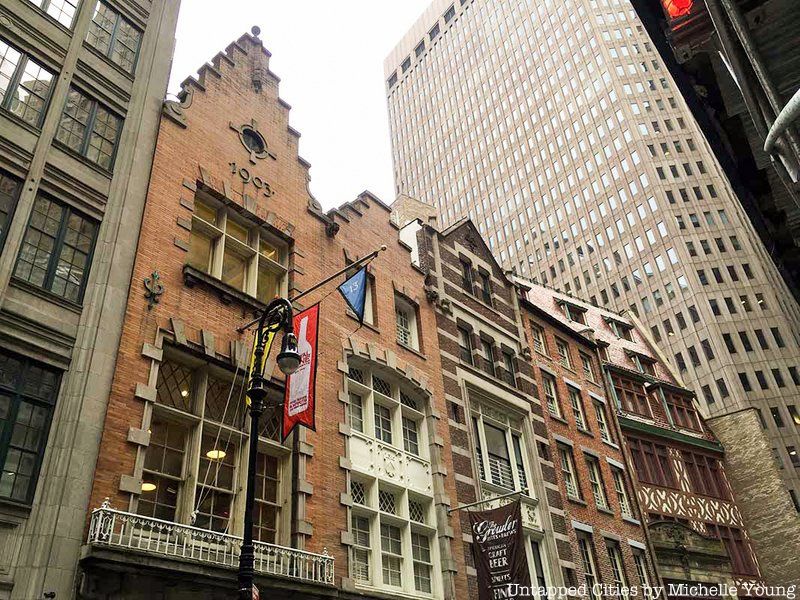
South William Street has a fairly new name compared to the rest of the streets on this list, taking on its present moniker in 1838. The street itself dates back to 1657 when it was the Dutch street Glazier’s Street. This pathway later went by Slyck Steegh, Muddy Lane, Mill Street, and Jew’s Alley. These previous names reflected the street’s condition as an actual muddy lane and its location as the site of glazier Evert Duyckingh’s dwelling, a succession of mills, and a Jewish synagogue.
The street was extended in 1836 from Mill Lane to William. The name William comes from Willem Beeckman, a Dutch immigrant who arrived in New Amsterdam in 1647 and later served nine terms as mayor. According to records on Old Streets and the 1695 Miller Plan, William Street between Hanover Square and Wall Street was called King Street under British rule. After the Revolutionary War, many vestiges of British reign in the form of street names were erased, though we still have King Street (and Prince Street) further north in Manhattan.
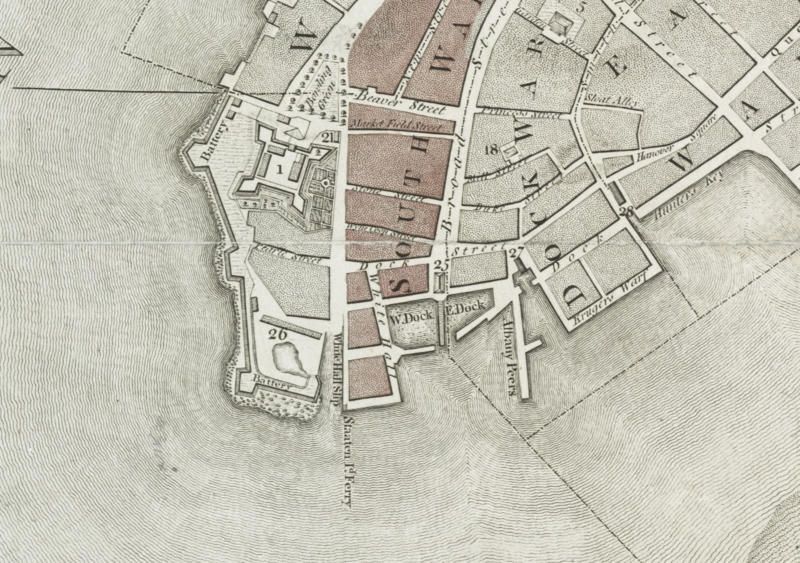
The street known to New Yorkers today as Whitehall Street was part of Het Marckvelt Steegie in New Amsterdam. The road dates to approximately 1626 when it was the site of a Dutch livestock market. The name was changed to Whitehall in the 1680s when English colonial governor Thomas Dougan built a mansion adjacent to the street and called it Whitehall after the London palace occupied by English kings from Henry VIII to William III.
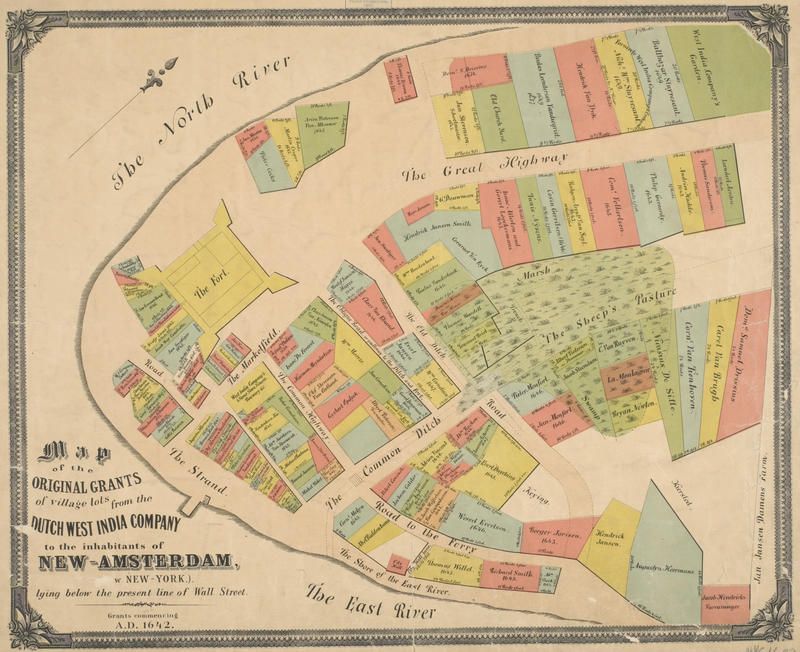
Marckvelt Steegie, in 1626, was the site of a Dutch livestock market. By 1695, under British reign, something else for sale on that street and it acquired the name Petticoate Lane. According to the Landmarks Designation report, prostitutes would gather on this street near the fort. The name Petticoate Lane was changed back to an English translation of the Dutch name after the Revolution and became Marketfield Street.
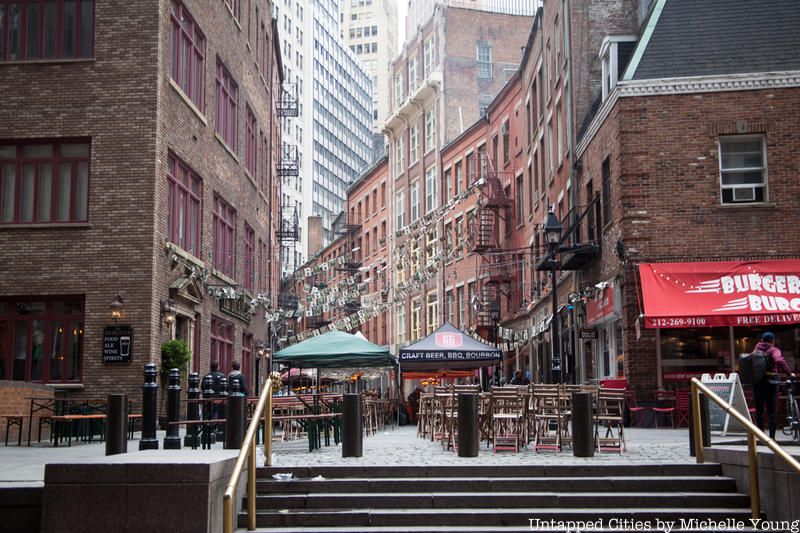
The Dutch street name for Stone Street was Hoogh Straet. Hoogh Straet was later joined with Brouwer Straet, or Brewer Street, in approximately 1655. The British called it High Street, a translation of hoogh, and then Duke Street. The name Stone Street came after the Revolution when Americans wanted to get rid of royalist street names. Stone comes from the street’s history as the first paved street. Untapped Cities tour guide, Justin Rivers, who runs our Tour of the Remnants of Dutch New Amsterdam, tells us, “Apparently the lore was that a rich Brewer’s wife wanted Peg-leg Pete (Peter Stuyvesant) to pave that street because she lived on it and the dust from the horses was ruining her drapes.”
The road was paved with cobblestones in 1655. Stone Street used to run from Broad Street to Hanover Square, but 85 Broad cut the street in two. To compensate for this disruption of the original street path, there is an interior hallway that runs through 85 Broad where special paving denotes the former presence of the street. Inside the Stone Street Corridor, there are lights that display clouds and the sky, to invoke the idea of a street outside. There are also enlarged maps that show the transformation of New York City.
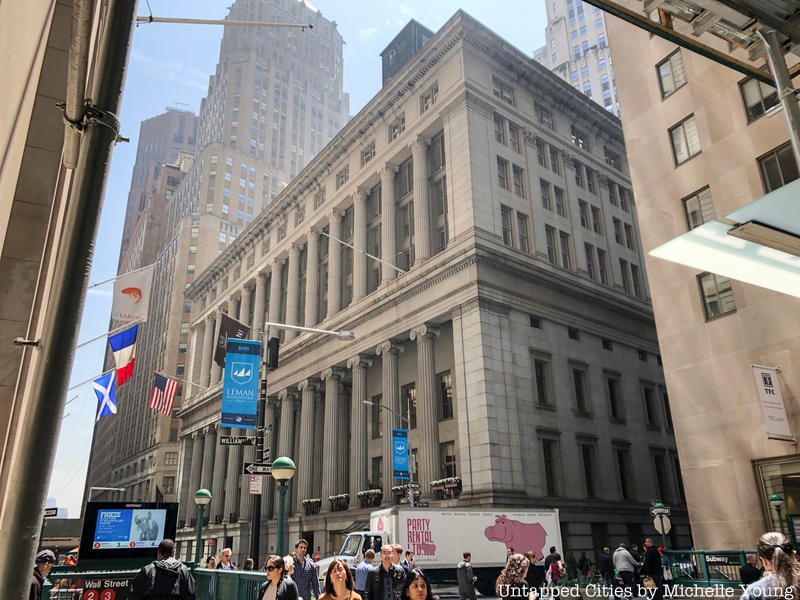
Exchange Place, which runs from Broadway to Hanover Street, incorporates two colonial streets, Tuyn Straet and Heere Dwars Straet, which means “The Lord’s Cross Street.” The present name dates from 1827 when construction was completed on the Merchants Exchange Building at Wall and William. This building was destroyed in the fire of 1835 and a new structure was built in 1842. That building, 55 Wall Street, was the former National City Bank Building and is a designated landmark. Discover more remnants of Dutch New Amsterdam in Untapped New York’s upcoming walking tour!
Subscribe to our newsletter